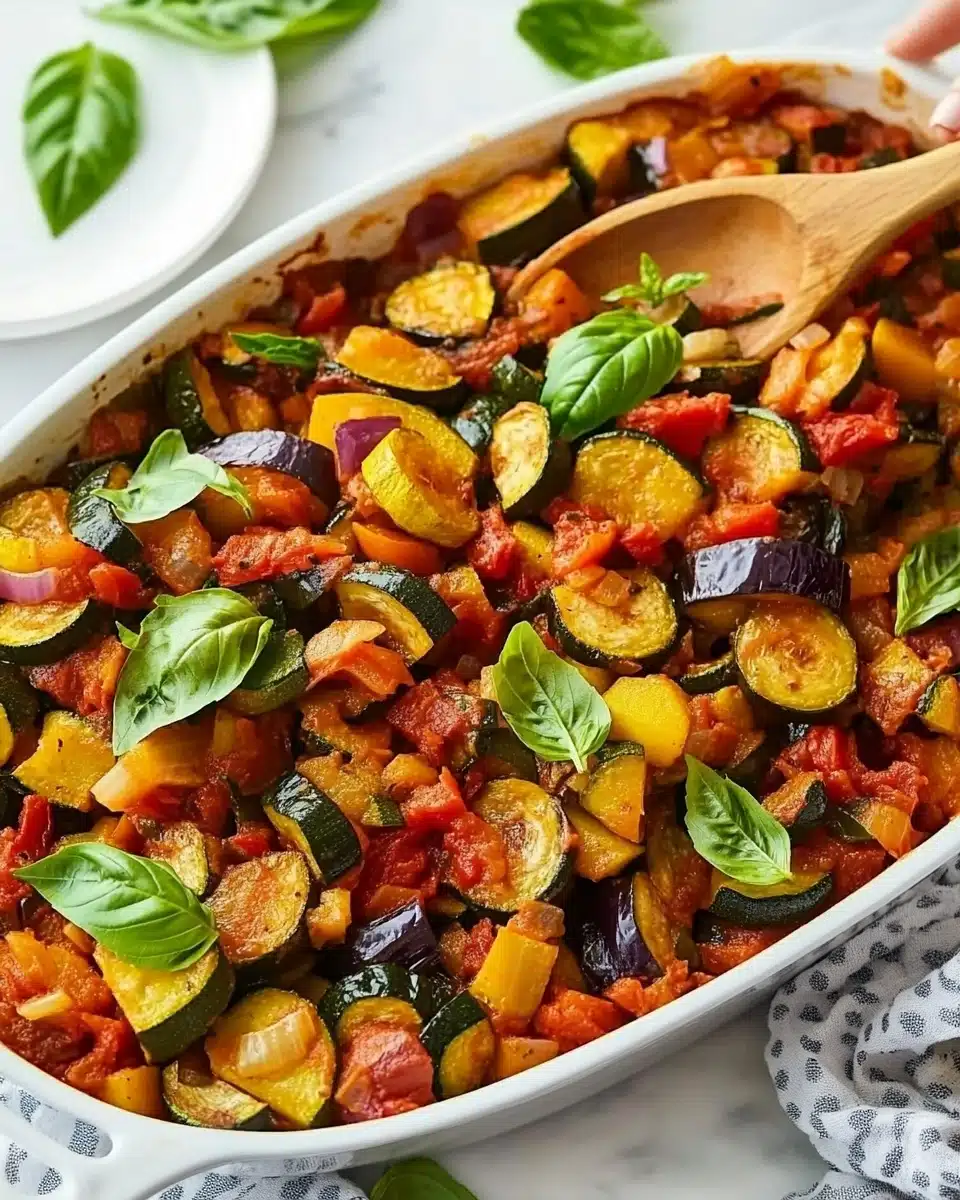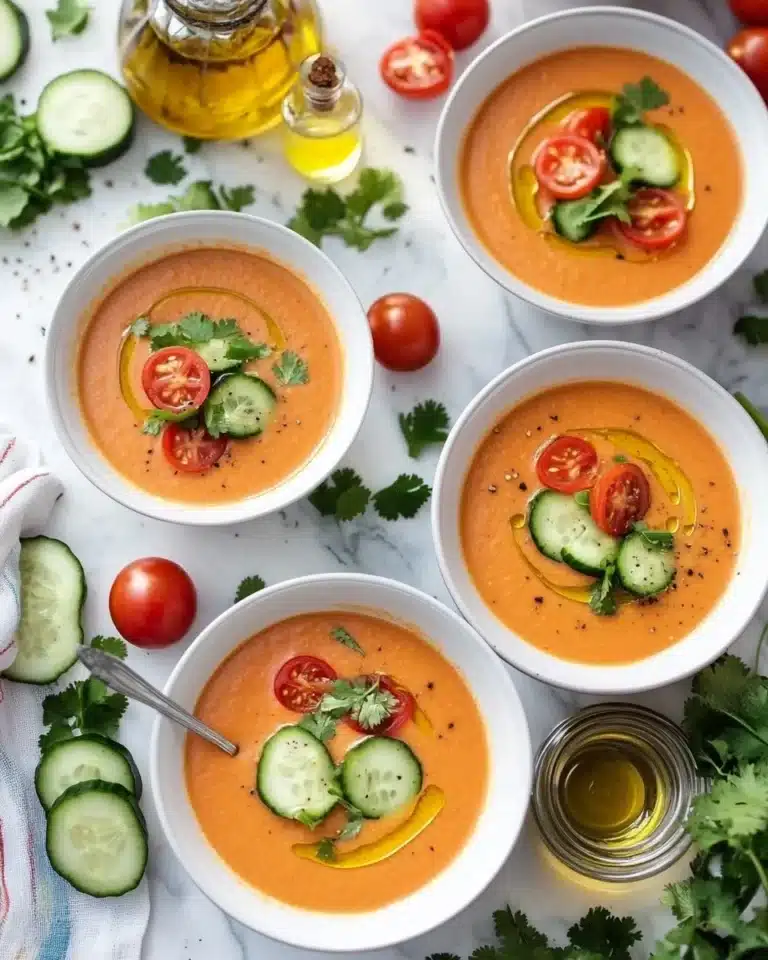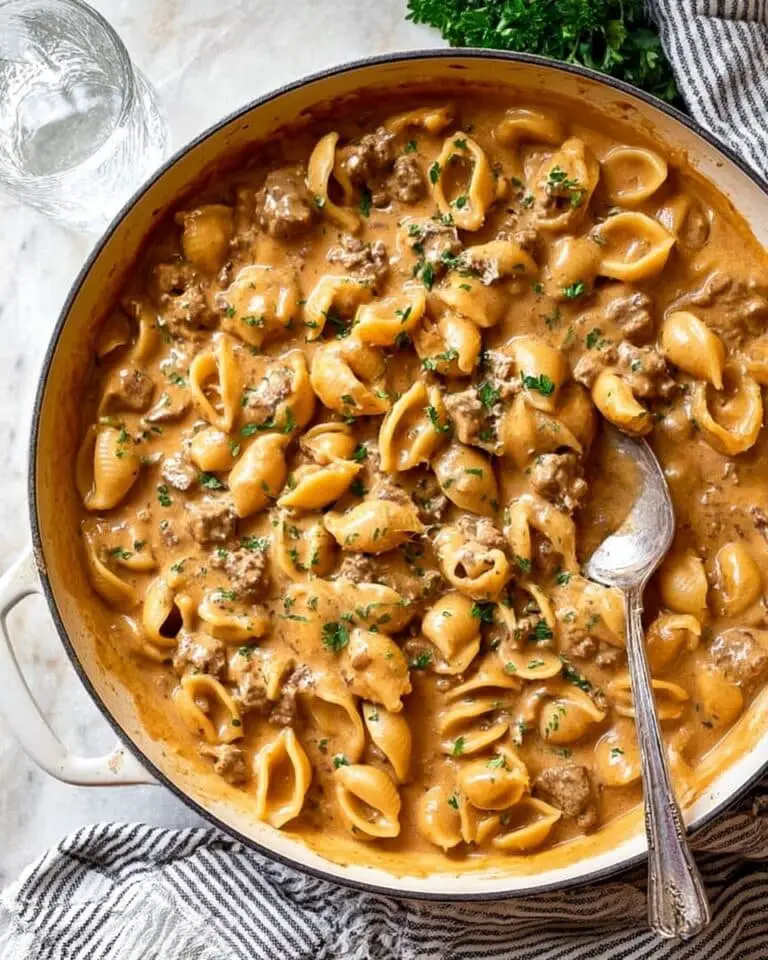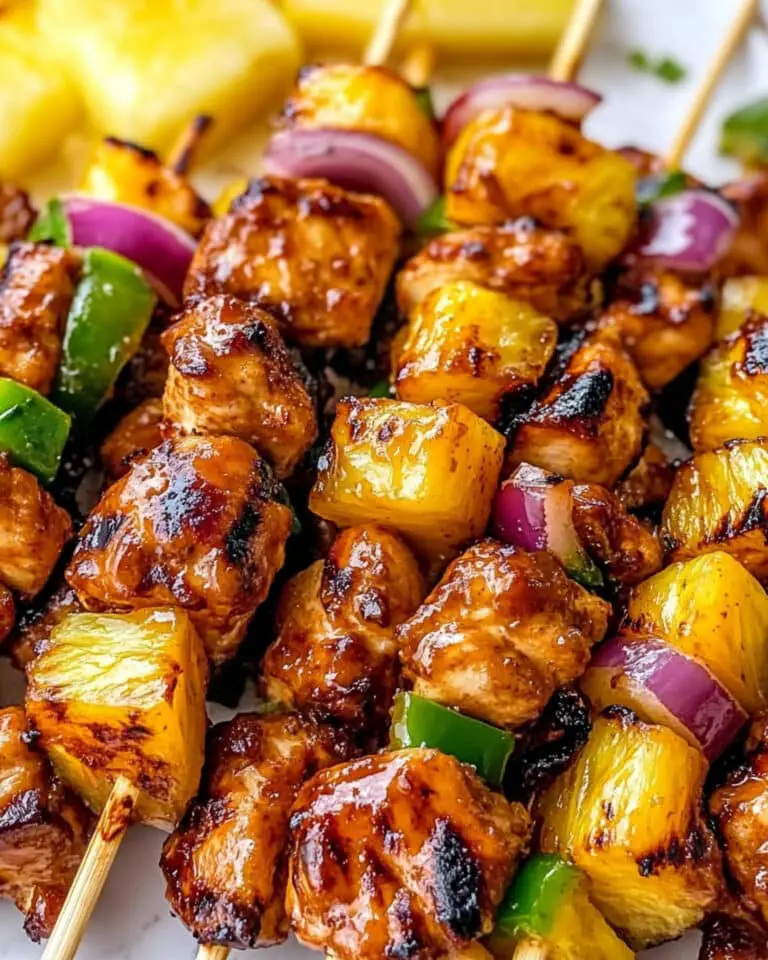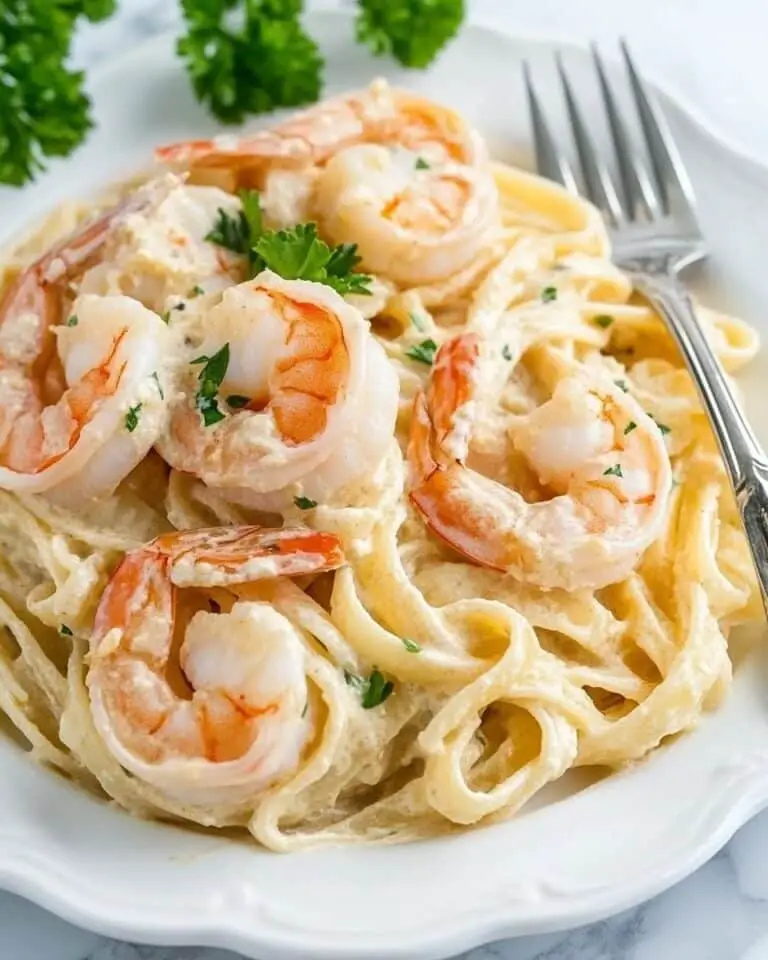Ratatouille is the essence of Provençal comfort—the kind of rustic, abundant stew that brings late summer’s best vegetables together in a symphony of flavor, color, and aroma. Every bite is a spoonful of sunshine, bursting with eggplant, zucchini, peppers, tomatoes, and the kind of herbaceous goodness that makes this French classic beloved around the world.
Why You’ll Love This Recipe
- Celebrates Summer’s Bounty: Ratatouille is a joyful showcase for the season’s freshest vegetables, highlighting vibrant flavors in every mouthful.
- Deep, Satisfying Flavor: Each vegetable is cooked to perfection, layered over time, creating a stew that’s infinitely more than the sum of its parts.
- Totally Customizable: You can swap in different veggies, play with spices, or adapt it to suit vegan, gluten-free, or low-carb diets.
- Even Better the Next Day: Those savory Provençal flavors intensify overnight, making leftovers something to look forward to!
Ingredients You’ll Need
The magic of Ratatouille comes from its simple, honest ingredients, each one playing a starring role. Freshness is your secret weapon—lush tomatoes, glossy eggplant, verdant zucchini, and fragrant herbs are what turn this dish from good to unforgettable.
- Eggplant: Go for a firm, shiny eggplant; salting helps it lose bitterness and brings out a creamy texture.
- Sea salt: Essential for brightening up all those beautiful layers and drawing out extra moisture from the veggies.
- Extra-virgin olive oil: Provides backbone and luxurious mouthfeel, coaxing out the flavor in every vegetable.
- Zucchini: Choose vibrant, small-to-medium zucchini for the best texture—they soak up flavor without turning mushy.
- Yellow onion: Adds delicate sweetness and ties the aromatic base together.
- Red or yellow bell pepper: For a burst of color and subtle, mellow crunch (either variety works beautifully).
- Garlic: Brings warmth and depth to every bite; don’t be shy with it.
- Tomatoes on the vine: The fresher and riper, the better—they’ll simmer into a luscious, zesty sauce.
- Red pepper flakes: A tiny pinch ignites that subtle, comforting heat characteristic of French country cooking.
- Cane sugar: Just the smallest hint to balance and highlight the tomatoes’ acidity.
- White wine vinegar: A splash at the end for lift and gentle brightness.
- Fresh thyme leaves: Earthy, woodsy flavor—just what classic Ratatouille needs.
- Freshly ground black pepper: Use fresh-cracked for optimal peppery oomph.
- Fresh basil leaves: Torn or sliced, basil brings everything together with an unmistakably summery aroma.
Variations
One of the joys of making Ratatouille is how forgiving and inventive it can be. You can tweak the ingredients or method to match what’s in your fridge, what’s in season, or your own dietary style—don’t be afraid to play!
- Oven-Baked Ratatouille: Layer the sliced vegetables and bake in a casserole dish for a show-stopping presentation (think the version from the movie!).
- Grilled Ratatouille: Char your veggies on the grill before assembling for smokier, slightly caramelized flavors.
- Herb Swaps: Try rosemary, marjoram, or savory for a twist on the classic Provençal herbaceousness.
- Add Beans or Lentils: For a heartier, protein-packed dish, stir in cooked white beans or French lentils.
How to Make Ratatouille
Step 1: Draw Out Moisture from the Eggplant
Begin by cutting your eggplant into bite-sized pieces, then sprinkle generously with sea salt and let it rest in a colander for 20 minutes. This step is not just tradition—it’s the secret to a richer, creamier eggplant that doesn’t water down your stew. After draining, pat it dry to avoid extra oil absorption when cooking.
Step 2: Sauté the Eggplant
Warm olive oil in a large skillet over medium heat and cook the salted eggplant, stirring now and then, for about 10 to 15 minutes until the pieces are golden and tender. Once done, transfer the eggplant to a big bowl—this layering is the key to fantastic texture in Ratatouille.
Step 3: Cook the Zucchini
Add a splash more oil and cook the zucchini in the same skillet until it’s just-tender, about 3 to 5 minutes. You want a little bite left—nothing mushy! Season, scoop into the bowl with the eggplant, and move on to the next veggie layer.
Step 4: Build the Aromatic Base
Pour in another swirl of oil, then gently soften the onion and bell pepper for about 5 minutes. Add in the garlic and salt, and let everything cook down together until meltingly tender and deeply fragrant.
Step 5: Simmer with Tomatoes and Spices
With the last bit of olive oil added, drop in your chopped tomatoes, a whisper of red pepper flakes, and just a hint of sugar. Cook until the tomatoes break down into a saucy, jammy base—this sets your Ratatouille apart with its rich, complex flavor.
Step 6: Bring All the Vegetables Together
Return the eggplant and zucchini to the skillet, add vinegar, thyme, pepper, and a last sprinkle of salt. Let it all gently simmer, stirring now and then, for 10 to 15 minutes until thick and luscious. Finish with fresh basil, taste, and adjust the seasoning—your kitchen should smell like the South of France!
Step 7: Garnish and Serve
Spoon your Ratatouille onto plates or into bowls, shower liberally with torn basil, and serve warm, at room temperature, or even chilled, depending on your mood and the weather.
Pro Tips for Making Ratatouille
- The Salting Trick: Don’t rush the eggplant salting step—this is what gives Ratatouille its silky, not soggy, texture.
- Cook Each Veg Separately: It’s tempting to save time and toss them all together, but sautéing veggies one by one preserves their shape and bright flavors.
- Let the Flavors Meld: If you can, make Ratatouille in advance and let it rest—an hour, or even overnight. The taste grows even deeper and more harmonious.
- Choose Ripe Tomatoes: Fresh, in-season tomatoes will yield the most flavorful, robust sauce (canned won’t do Ratatouille justice).
How to Serve Ratatouille
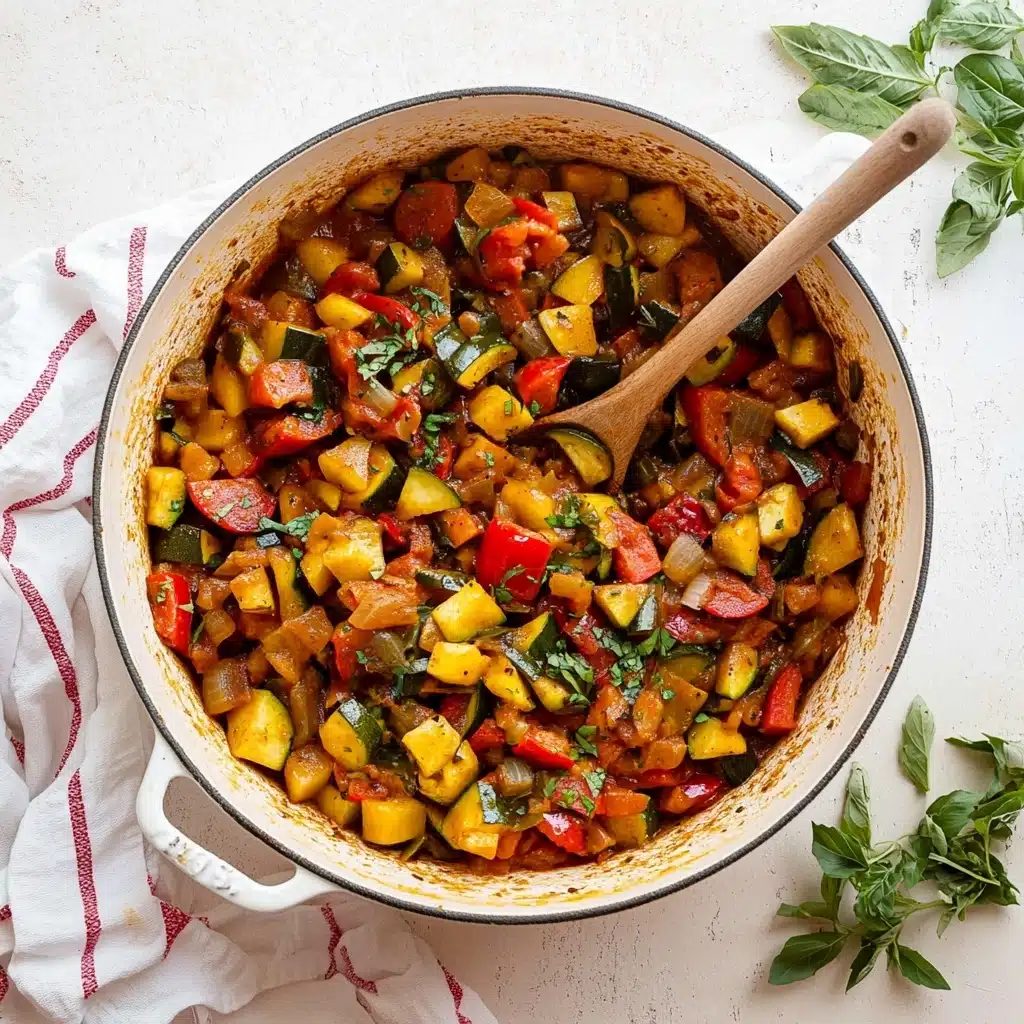
Garnishes
Nothing brings Ratatouille to life like a generous scattering of torn fresh basil or a handful of chopped parsley. For an elegant finish, add a drizzle of fruity olive oil or a few shavings of Parmesan cheese—simple, bright, and irresistibly fresh.
Side Dishes
Ratatouille is fantastic with crusty baguette, creamy polenta, or a tumble of soft cooked couscous. Try it as a hearty topping for baked potatoes, spooned over rice, or nestled next to roasted chicken for a memorable meal.
Creative Ways to Present
Show off Ratatouille in individual ramekins for a stylish dinner party starter, pile atop grilled sourdough for a Provencal-inspired bruschetta, or layer in jars for a picnic-ready salad. You can even make it the star of a veggie tart or galette!
Make Ahead and Storage
Storing Leftovers
Let your Ratatouille cool completely, then store in an airtight container in the fridge. It keeps well for up to 4 days, and the flavors only get better—almost like it’s made for leftovers!
Freezing
Ratatouille is freezer-friendly! Spoon cooled portions into freezer-safe containers and freeze for up to 3 months. Thaw in the fridge overnight for easy meal-prep magic anytime.
Reheating
Gently warm Ratatouille on the stove over low heat, stirring occasionally until heated through—or pop it in the microwave for a quick lunch that tastes like summer. Add a splash of water or broth if it seems too thick.
FAQs
-
Can I use canned tomatoes for Ratatouille?
While you can use canned tomatoes in a pinch, fresh, ripe tomatoes create a richer, brighter sauce and capture the true spirit of traditional Ratatouille. If you need to substitute, try to choose whole, quality canned tomatoes with minimal sodium, and add them with care.
-
What if I don’t have fresh thyme or basil?
Dried herbs can work in a pinch, but their flavors are more concentrated, so use less—about one-third the amount. If you have other fresh herbs like parsley, marjoram, or even a little oregano, they’ll still evoke that sun-kissed southern French flavor profile.
-
How do you keep Ratatouille from being watery?
The secret is in salting and draining the eggplant, cooking veggies separately, and simmering everything together until thick and luscious. This lets excess moisture evaporate and gives you all those deep, layered flavors you crave.
-
Is Ratatouille served hot or cold?
Ratatouille is incredibly versatile—you can serve it warm as a side or main, at room temperature on a buffet, or even chilled as a refreshing summer lunch. The flavors shine at every temperature, so enjoy it however you like!
Final Thoughts
If you’ve never made Ratatouille at home before, prepare for a revelation—the transformation of humble vegetables into a sun-drenched masterpiece. This recipe is pure comfort, brimming with color, fragrance, and a taste of Southern France in every bite. Give it a try, and fall in love with the process (and the leftovers!).
Print
Ratatouille Recipe
- Prep Time: 30 minutes
- Cook Time: 50 minutes
- Total Time: 1 hour 20 minutes
- Yield: Serves 4
- Category: Stovetop
- Method: Stovetop
- Cuisine: French
Description
A classic French dish, Ratatouille is a flavorful vegetable stew made with eggplant, zucchini, bell peppers, and tomatoes cooked in olive oil with aromatic herbs. This recipe yields a delicious and hearty dish that is perfect as a side or even a main course.
Ingredients
Eggplant:
- 1 medium-large eggplant, 1 pound, cut into 1/2-inch pieces
- Sea salt
Zucchini:
- 2 medium zucchini, 1 pound, cut into 1/2-inch pieces
- Sea salt
Other Vegetables:
- 6 tablespoons extra-virgin olive oil, plus more as needed
- 1 medium yellow onion, chopped
- 1 red or yellow bell pepper, stemmed, seeded, and cut into 1/2-inch pieces
- 3 garlic cloves, chopped
- 1 pound tomatoes on the vine, 3 to 5, cut into 1/2-inch pieces
- Pinch red pepper flakes
- Pinch cane sugar
- 1 tablespoon white wine vinegar
- 2 teaspoons chopped fresh thyme leaves
- Freshly ground black pepper
- 1/4 cup thinly sliced fresh basil leaves, plus more torn basil for garnish
Instructions
- Prepare the Eggplant: Sprinkle eggplant with salt and allow to drain for 20 minutes. Pat dry.
- Cook the Eggplant and Zucchini: Sauté eggplant in olive oil until tender. Add zucchini, season, and set aside.
- Sauté Onion and Pepper: Cook onion and pepper until softened. Add garlic and continue cooking.
- Add Tomatoes and Seasonings: Combine tomatoes, red pepper flakes, and sugar. Cook until tomatoes break down.
- Combine and Cook: Mix in eggplant and zucchini with vinegar, thyme, salt, and pepper. Cook until thickened.
- Finish and Serve: Stir in basil, adjust seasoning, garnish with basil, and serve.
Nutrition
- Serving Size: 1 serving
- Calories: 275
- Sugar: 12g
- Sodium: 590mg
- Fat: 19g
- Saturated Fat: 3g
- Unsaturated Fat: 14g
- Trans Fat: 0g
- Carbohydrates: 26g
- Fiber: 9g
- Protein: 5g
- Cholesterol: 0mg

